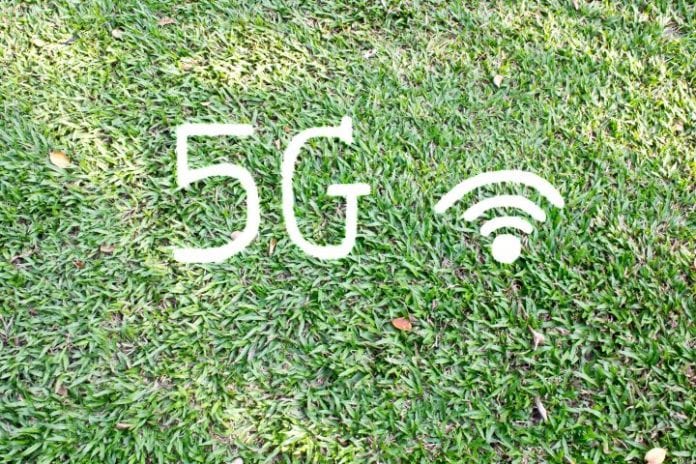Verizon 5G plans to focus on fixed wireless internet, VoIP services using millimeter wave spectrum and routing through a virtualized core.
Verizon Communications is looking to begin fixed wireless “5G” trials in April across a handful of U.S. cities as it continues to progress its next-generation network efforts.
The carrier said plans include trials in 11 markets by mid-year, including portions of Ann Arbor, Michigan; Atlanta; Bernardsville, New Jersey; Brockton, Massachusetts; Dallas; Denver; Houston; Miami; Sacramento, California; Seattle; and Washington, D.C. The trials are set to use millimeter wave spectrum bands, with a service focus on providing wireless internet access and voice over IP calling.
The test is set to include select customers, with an emphasis on gauging the user experience, evaluating network performance and gain insight into the performance of services delivered over millimeter wave spectrum. Samsung, which is one of the vendors participating in the trials, claims precommercial tests that began late last year showed “multigigabit throughputs at radio distances of up to 1,500 feet across each of the different environments selected for the customer trials.”
Samsung said its part of the trial will include deployments in New Jersey, Massachusetts, Texas and Washington, D.C., set to begin in April, with a fifth location in Michigan starting trials by mid-year. The trials are set to use spectrum in the 28 GHz band.
The trial is said to include the deployment of “5G access units” across various parts of the markets linking radio signals to a virtualized core network set up with Verizon’s data centers. Samsung said it’s supplying precommercial customer premise equipment, window antennas, and its 5G radio and core solutions.
Ericsson is also part of the program, stating its end-to-end solution will be used in multiple cities as part of the trial.
Verizon last month hinted at plans to move on “commercial-scale pilots” in about 10 different locations across the country as part of its ongoing 5G work. Verizon noted last summer it was seeing 5G network speed tests showing results in excess of one gigabit per second.
Verizon was one of the first domestic operators to announce its 5G network plans, unveiling efforts in late 2015 towards initial trials in 2016. The carrier has since moved on rolling out technical specifications for its vendor partners and is also in a bit of a battle with rival AT&T concerning standards timing.
Millimeter wave spectrum challenges
Research firm Mobile Experts recently released a case study on broadband-based 5G services focused on return on investment for deployments, noting current technology tied to the limited propagation characteristics of the 28 GHz band come up short in terms of supporting a business case.
The firm said it calculated the potential ROI for operators investing in a pre-5G network using the 28 GHz band compared with LTE costs and “the potential costs for a sub-6 GHz network using 5G technology,” and found at “historical prices, 5G will not be successful.” To reach the necessary ROI, Mobile Experts said the market would need inexpensive access to large spectrum blocks.
“The business case for 5G fixed broadband is not a slam dunk,” said Joe Madden, principal analyst at Mobile Experts. “We expect pre-5G deployment to be a very targeted investment by mobile operators, addressing very specific neighborhoods instead of nationwide deployment.”
Madden noted millimeter wave links at 50 meters created a “challenge to the business case, because the number of customers served by each radio will be too small.” The firm noted links of at least 200 meters would be required to reach enough users to support sufficient ROI.
“Link distance is a key factor in the pre-5G business case at 28 GHz,” Madden explained. “We’ve conducted some in-depth link budget calculations and compared our results to trial results reported by Samsung, Ericsson, Intel and others. Based on this deep technical work, we have some concerns about the power, linearity and heat dissipation in pre-5G infrastructure. The laws of physics will limit these pre-5G networks.”
Mobile Experts noted the 28 GHz band and fixed wireless broadband services will be a starting point, “but a combination of low-band and high-band spectrum will be important to reach mobile gigabit performance.”
Carriers have acknowledged the challenges of high-band spectrum for commercial wireless services.
“If you put a hand in front of a transmitter you will see degradation of performance,” said Thomas Keathley, SVP of wireless network architecture and design at AT&T, during a panel discussion at last year’s CTIA Super Mobility event. “It’s going to be a very different implementation than traditional cellular networks.”
Adam Koeppe, VP of access technology planning at Verizon, noted that indeed propagation characteristics of high-band spectrum will be a challenge, but those “issues are not anything new.” Instead he noted what is different is the use of beamforming and beamtracking technology that allows the use of those bands in access-type deployments.
“Our trials have been to take those out of the lab and into real world scenarios,” Koeppe said of the carrier’s 5G network trials.
Bored? Why not follow me on Twitter.

